A man in a fancy military jacket—gold epaulettes and all—sits slumped on an outsized throne. Six men creep in warily, circle him, bow mockingly, jump about, seem to confer. The man doesn’t move. This is how José Limón’s The Emperor Jones begins. Limón choreographed the dance, based on Eugene O’Neill’s play of the same, in 1956, to a turbulent commissioned score by Heitor Villa-Lobos. The décor and costumes by Sharon Liu are new.
In one sense, the piece is very much of its era. When the title character rises and pulls himself together, it is to perform a long solo that establishes his power-mad character and his crazed vision of himself as master of his domain (now limited to six rag-tag followers). You don’t see this kind of weighty solo much anymore. Like other heroes played by Limón (and the heroines whose conflicting urges Martha Graham mapped out), the emperor is beset by memories and feelings. The real domain is the interior of his mind, and in it time becomes elastic.
Limón choreographed the dance in bold, weighty strokes to evoke incidents in Jones’s past: a chain gang, a murder, an auction block, a flame-lit African ritual (lighting by Carol Mullins, executed by Joshua Rose). These scenes emerge like pictures coalescing in the central figure’s memory and as quickly dissolve. The nimble men become whatever the Emperor needs them to be. (For the record, they are: Raphaël Boumaïla, James Brenneman III, Gregory Livingston, Dante Puleo, Francisco Ruvalcaba, and Aaron Livingston—all terrific in their many roles.)
The self-proclaimed ruler of a small island also has a nemesis, called in this production “The Trader.” In the original production, Limón played the Emperor Jones and Lucas Hoving the character originally billed as The White Man. In this reconstruction directed by Clay Taliaferro (who was once a formidable Emperor Jones himself), Daniel Fetecua Soto takes on Limón’s role and Durell Comedy assumes Hoving’s. Fetecua Soto is not as large a man as Limón was, but he extends himself both physically and emotionally to convey the shifting moods of glee, suspicion, fear, and rage. Comedy, like Hoving, is tall and slim—well suited to the eely, loose-jointed duplicity built into the choreography. With a little more sanity and a little more elegance, we could be watching Iago dupe Othello (roles Limón and Hoving played in the 1949 masterpiece, The Moor’s Pavane).
In 1956, the production reproduced the racial scenario of O’Neill’s play. Hoving was fair and blond; Limón and, at least in one production I recall, the six men used fairly dark makeup. (For a glimpse of the original cast: www.youtube.com/watch?v=6AaR352rOIg.) Fetecua Solo is Hispanic (as was Limón), and Durrell is African American. The casting has removed the element of colonial exploitation, but in return evokes the dictatorships in African and Caribbean countries, some of which postdate O’Neill’s tale, thus giving the dance a new relevance. Think Idi Amin, Charles Taylor, Papa Doc Duvalier, and their ilk, along with their sycophantic advisors.
Carla Maxwell, who became the Limón Dance Company’s artistic director in 1978, has done a remarkable of job of keeping it flourishing. This involves choosing carefully which works by Limón and his mentor, Doris Humphrey, to present and directing them with care; making difficult decisions about casting; and commissioning new works that will bring the company into the present yet work well when juxtaposed to its repertory.
The Joyce Theater programs (June 19 through 24) that opened with The Emperor Jones celebrated the company’s 65th anniversary. Roxane D’Orleans Juste (now assistant artistic director) performed Limón’s solo Chaconne to the chaconne from Bach’s Partita in D minor, played by violinist Kinga Augustyn. Gender isn’t an issue in this case, although D’Orleans Juste gives an understated performance, emphasizing subtleties of timing and gesture.
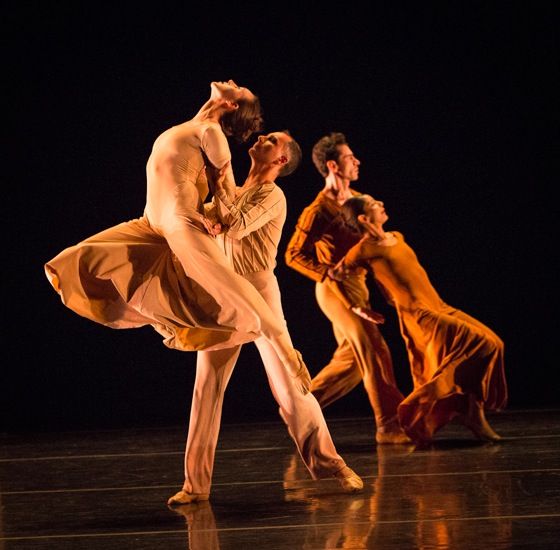
Belinda McGuire and Raphaël Boumaïla (foreground), Francisco Ruvalcaba and Elise Leon-Drew in Jirí Kylián’s La Cathédrale Engloutie. Photo: Yi-Chun Wu
Jirí Kylián choreographed La Cathédrale Engloutie in 1975 for Nederlands Dans Theater. I’ve often thought that a few early Kylián works were influenced by Limón; certainly the dance fits into the company’s style while adding some sexier images. Set to the haunting piece of the same name by Claude Debussy (played beautifully at the Joyce by pianist Anna Shelest, despite the taped sound of breaking waves that keeps interrupting the music), the dance seems to be about loss and repentance.
The composer was inspired by the tale of a cathedral that sank into the sea because of the dissoluteness of the community that supported it. The women in their plain dresses and the men in shirts and trousers reflect the tides that conceal (and once a year reveal) the church. The initial image shows two women sitting on their heels, facing offstage, with two men who several times gently pull the women’s heads back to urge them to move farther away from what they’re gazing at. Kylián’s movement is earthy; the six dancers bend and arch their bodies as if swallowing regret or remembering abandon. The dancers roll like waves into relationships, tossed by memories.
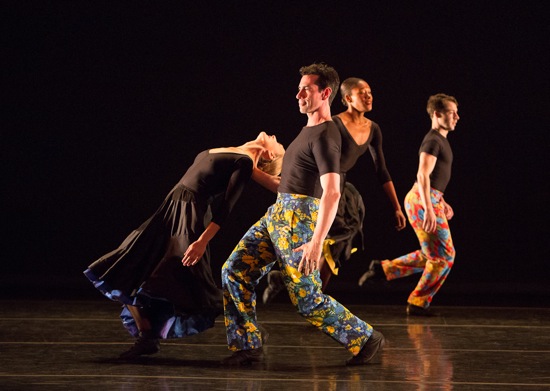
(L to R) Kathryn Alter, Francisco Ruvalcaba, Kristen Foote, and Aaron Selissen in Rodrigo Pederneiras’s Come With Me. Photo: Yi-Chun Wu
The world premiere is Come With Me, choreographed by Rodrigo Pederneiras, a choreographer associated with Brazil’s Grupo Corpo, and set to a commissioned score by Paquito D’Rivera. The music with its use of Brazilian and African rhythms is the sort to set feet dancing, and when the piece starts, you realize that the other works on the program—with the possible exception of Chaconne—focus on big movement of the whole body; the dancer’s feet just carry them along. The mood of Come With Me is festive, and the performers treat it like the well-ordered carnival that it is. Maria Luiza Magalhàes’s flowered pants for the men and flouncy skirts for the women are imaginative and tasteful within their gaudiness.
Is the piece a major work of art? No (and at some point it begins to feel long). But it shows the vividly expressive dancers in ways that the rest of the program doesn’t and is perfectly in keeping with a company repertory that has included Humphrey’s Ritmo Jondo and Lament for Ignacio Sánchez Mejías. The dancers kick up their heels, swing their hips, show off for one another, and exult in the good time they’re having. Now and then Pederneiras calls your attention to this one or that one as they join and separate. Kristen Foote looks lusciously alive in a short solo, Other moments highlight Comedy’s loose-limbed deftness and Logan Frances Kruger’s lustiness. Kathryn Alter and Fetecua Soto shine in a duet. The celebration never stops; the little vignettes just bubble up and then rush away or flow into other activities. Also adding to the festivities: Aaron Selissen, Elise Leon-Drew, Boumaïla, Puleo, and Ruvalcaba.

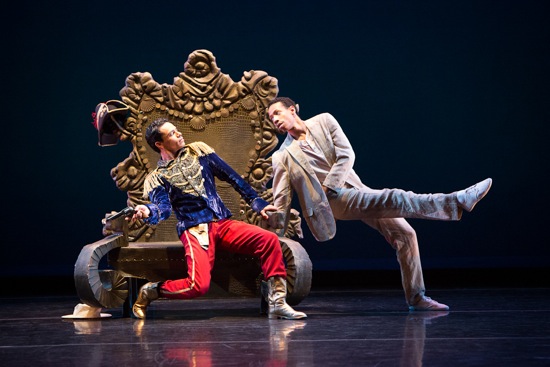
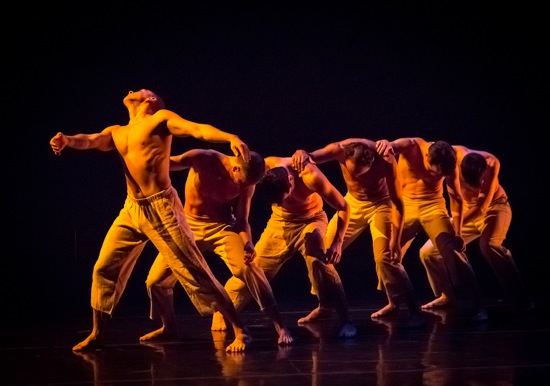
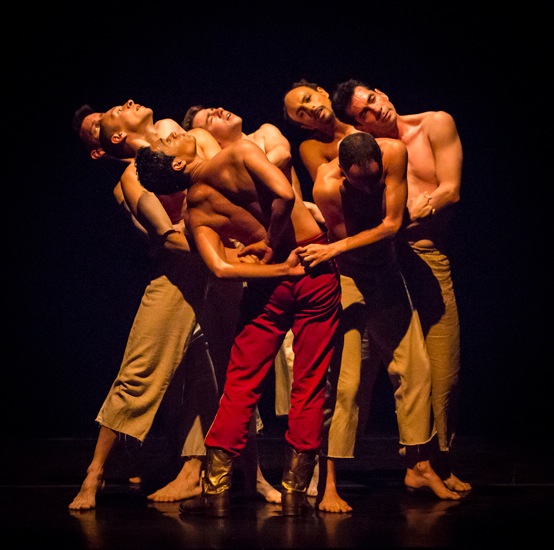
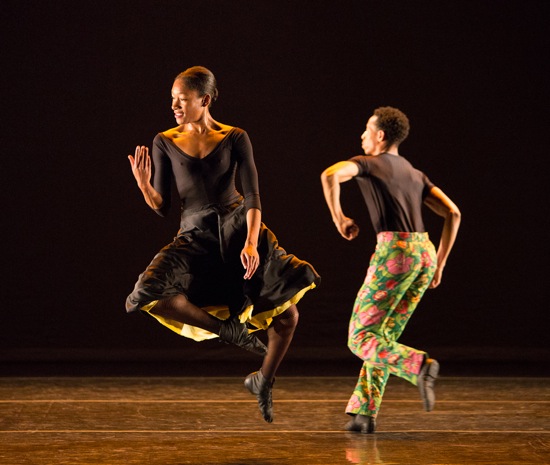
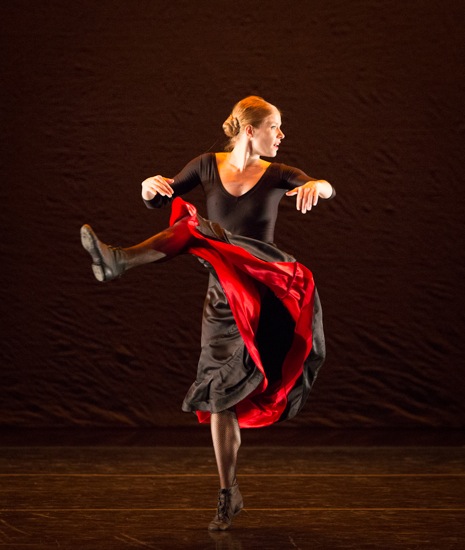
To me, “The Emperor Jones” seemed dated, not primarily because of Limon’s choreography but rather because of Villa-Lobos’ music. I was also disappointed that Kylian used so little of Debussy’s beautiful piano piece, preferring instead to rely on the sound of ocean waves.
Woah! I’m really enjoying the template/theme of this blog. It’s simple,
yet effective. A lot of times it’s very difficult to get that “perfect balance” between user friendliness and visual appeal. I must say that you’ve done a great job with this.
Also, the blog loads extremely fast for
me on Firefox. Excellent Blog!